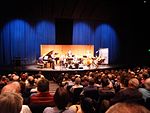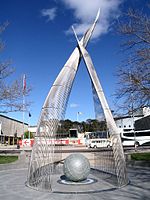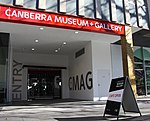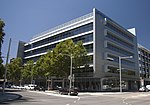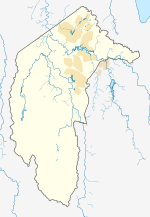Division of Fraser (Australian Capital Territory House of Assembly)
1975 establishments in Australia1986 disestablishments in AustraliaFormer electorates of the Australian Capital TerritoryHistory of the Australian Capital TerritoryParliament of the Australian Capital Territory
The division of Fraser was one of the two electorates of the unicameral Australian Capital Territory House of Assembly. It elected 9 members in 1975 and 1979, and 8 members in 1982. It was named for Jim Fraser, who was the Member for Australian Capital Territory from 1951 to 1970. It encompassed the northern suburbs of Canberra, including the districts of Belconnen, Gungahlin, North Canberra and also the Jervis Bay Territory.
Excerpt from the Wikipedia article Division of Fraser (Australian Capital Territory House of Assembly) (License: CC BY-SA 3.0, Authors).Division of Fraser (Australian Capital Territory House of Assembly)
Civic Square, Canberra City
Geographical coordinates (GPS) Address Nearby Places Show on map
Geographical coordinates (GPS)
| Latitude | Longitude |
|---|---|
| N -35.2817 ° | E 149.1311 ° |
Address
Legislative Assembly for the Australian Capital Territory
Civic Square
2601 Canberra, City
Australia
Open on Google Maps

